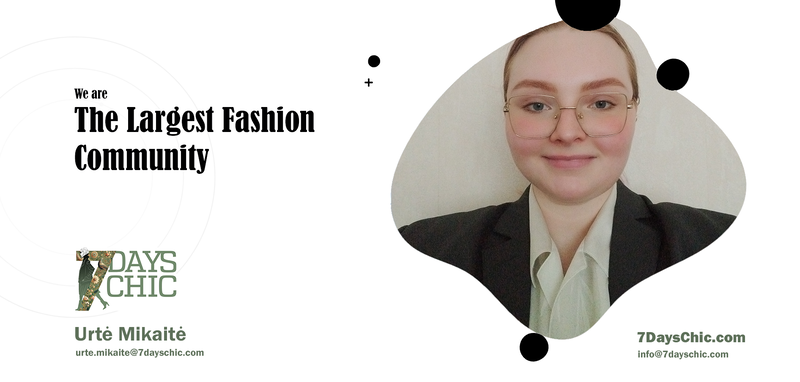6. Understanding Fashion Trends and Markets
Understanding fashion trends and the market is essential for staying competitive in the fashion industry. Trends are influenced by cultural shifts, technology, social media, and fashion weeks, shaping what consumers want to wear. They can be short-lived micro-trends, long-lasting macro-trends, or seasonal changes driven by weather and events. The fashion market itself is divided into segments such as luxury, fast fashion, sustainable fashion, and streetwear, each catering to different consumer preferences and budgets. Market analysis involves studying consumer demand, economic conditions, technological advancements, and shifts in retail and e-commerce. By understanding these factors, fashion brands and designers can create relevant collections, target the right audiences, and adapt to industry changes, ensuring long-term success.
The Role of Trends in Fashion Design
Trends play a crucial role in fashion design, influencing everything from fabric choices to silhouettes and color palettes. They shape consumer demand, drive innovation, and help designers stay relevant in a competitive industry.
1. Inspiration & Creativity
- Trends provide a foundation for designers to experiment with new styles and aesthetics.
- They serve as a reflection of cultural, social, and technological shifts in society.
2. Consumer Influence & Market Demand
- Fashion trends dictate what consumers find desirable, guiding purchasing decisions.
- Brands that align with current trends often see increased sales and engagement.
3. Industry Evolution & Innovation
- Trends push the industry forward by introducing new materials, techniques, and concepts.
- They encourage sustainability efforts, such as eco-friendly fabrics and circular fashion models.
4. Fast Fashion vs. Timeless Design
- Fast fashion brands capitalize on short-lived trends for quick profits.
- High-end designers balance trends with timeless elements to create lasting impact.
5. Digital & Social Media Impact
- Influencers, celebrities, and social media platforms rapidly accelerate trend cycles.
- AI and data analytics now predict upcoming fashion trends with greater accuracy.
How to Stay Updated with Trends
Fashion is an ever-evolving industry where trends change rapidly. Staying updated with current styles, colors, and consumer preferences is essential for fashion designers, stylists, and enthusiasts. Keeping an eye on emerging trends allows designers to create relevant and marketable collections.
1. Follow Fashion Weeks and Runway Shows
Fashion weeks in major cities like Paris, Milan, New York, and London set the tone for upcoming trends. Designers unveil their latest collections, and fashion forecasters analyze key patterns, colors, and silhouettes.
- Watch live streams or recordings of fashion week shows.
- Follow brands and designers on social media for backstage insights.
- Read reviews and analysis from fashion publications.
2. Stay Connected with Fashion Magazines and Websites
Top fashion publications provide trend forecasts, designer interviews, and style inspiration. Some must-read sources include:
- Vogue – Covers high fashion, celebrity style, and runway reports.
- Harper’s Bazaar – Offers seasonal trend breakdowns and emerging designer features.
- Elle – Provides a mix of fashion, beauty, and cultural trends.
- Business of Fashion (BoF) – Covers fashion industry trends, business insights, and global developments.
- WWD (Women’s Wear Daily) – Focuses on industry news, trend reports, and brand strategies.
3. Follow Trend Forecasting Agencies
Trend forecasting companies analyze global fashion, consumer behavior, and cultural shifts to predict upcoming styles. Some leading agencies include:
- WGSN – Offers deep insights into future fashion, colors, and sustainability.
- Trendstop – Provides reports on emerging and commercial fashion trends.
- Pantone – Sets the color trends for fashion and design industries.
Subscribing to trend reports or attending forecasting seminars can provide valuable industry insights.
4. Engage with Social Media and Influencers
Social media plays a major role in shaping fashion trends. Platforms like Instagram, TikTok, and Pinterest highlight emerging styles, DIY fashion, and micro-trends.
- Follow fashion influencers and stylists who frequently post about new trends.
- Monitor viral trends through hashtags and trending searches.
- Join fashion communities or groups where professionals share insights.
5. Observe Street Style and Pop Culture
Fashion isn’t just dictated by designers—it emerges from the streets and pop culture as well.
- Follow street style blogs and photographers to see how people interpret trends.
- Watch music videos, films, and TV shows for fashion inspiration.
- Observe what celebrities and cultural icons are wearing.
6. Visit Trade Shows and Industry Events
Fashion trade shows and industry events showcase upcoming trends and innovations. Attending these events can help designers understand what’s next in the industry.
- Première Vision (Paris) – Covers fabrics, materials, and textile trends.
- Magic Las Vegas – Focuses on apparel and manufacturing.
- Pitti Uomo (Italy) – Highlights menswear trends.
7. Keep an Eye on Sustainable and Ethical Fashion Trends
With the rise of eco-conscious consumers, sustainability has become a major trend in fashion. Stay informed about:
- The latest developments in sustainable fabrics and ethical production.
- Brands incorporating circular fashion practices.
- Consumer preferences are shifting towards slow fashion.
8. Experiment and Develop Your Own Trend Interpretations
While keeping up with trends is important, adding your own creative touch is what sets you apart as a designer. Use trend inspiration while maintaining your unique design identity.
By staying engaged with the industry through multiple channels, you can anticipate trends and apply them effectively in your designs or styling choices.
Forecasting Future Trends
Fashion forecasting is the process of predicting upcoming trends in colors, fabrics, silhouettes, and styles. Successful forecasting requires analyzing consumer behavior, cultural shifts, and technological advancements to anticipate what people will want to wear in the future. Fashion designers, brands, and retailers rely on trend forecasting to stay ahead of the competition and create collections that resonate with the market.
1. Study Past and Current Trends
Fashion is cyclical, meaning trends from past decades often return with a modern twist. By analyzing previous fashion cycles, you can identify patterns that might re-emerge.
- Research past fashion eras (e.g., 70s bohemian, 90s minimalism) to see which elements are making a comeback.
- Observe how current designers reinterpret vintage styles.
- Track seasonal trends over the years to see which ones repeat.
2. Follow Trend Forecasting Agencies
Professional trend forecasting agencies analyze global fashion, technology, and culture to predict upcoming styles. Some of the most trusted sources include:
- WGSN – Provides long-term and short-term fashion forecasts based on extensive research.
- Pantone – Identifies key color trends that influence apparel and design industries.
- Trendstop – Analyzes emerging fashion trends for commercial use.
Subscribing to these services or following their reports can give valuable insights into future styles.
3. Monitor Social Media and Digital Platforms
Social media platforms are one of the fastest ways to spot emerging trends. Influencers, stylists, and everyday fashion enthusiasts showcase new styles before they hit mainstream stores.
- Use Instagram and TikTok to track viral fashion challenges and micro-trends.
- Follow fashion hashtags and influencers to see what styles are gaining traction.
- Explore Pinterest boards to see what users are saving for future inspiration.
- Watch YouTube fashion hauls and trend predictions from fashion vloggers.
4. Attend Fashion Weeks and Industry Events
Fashion weeks in New York, Paris, Milan, and London set the stage for the next season’s trends. Designers showcase their latest collections, which trickle down into mainstream fashion over time.
- Observe the common themes, colors, and fabrics used in major runway shows.
- Pay attention to emerging designers who introduce fresh concepts.
- Read post-show analyses from industry experts and fashion journalists.
5. Watch Consumer Behavior and Lifestyle Changes
Changes in consumer habits often influence fashion trends. Understanding lifestyle shifts can help predict what people will wear in the future.
- Track the demand for sustainable and ethical fashion.
- Observe how economic shifts impact fashion (e.g., luxury vs. budget-conscious shopping).
- Identify generational influences (Gen Z, Millennials) and how their values shape clothing preferences.
- Consider technological advancements, such as the rise of digital fashion and smart textiles.
6. Keep Up With Pop Culture and Entertainment
Movies, TV shows, music videos, and celebrities often dictate fashion trends. Paying attention to pop culture can help predict what will become popular.
- Observe costume design in hit movies and series (e.g., “Euphoria” influenced bold makeup and Y2K fashion).
- Follow celebrity red carpet appearances for style inspiration.
- Look at how musicians and performers incorporate fashion into their branding.
7. Study Street Style and Global Fashion Movements
Fashion isn’t just dictated by high-end designers; street style plays a crucial role in shaping trends. Look at what everyday people are wearing in major cities like Tokyo, Seoul, London, and New York.
- Follow street style photographers and bloggers.
- Visit cultural hubs and fashion-forward neighborhoods to observe organic style trends.
- Take note of DIY fashion and customization trends, which often inspire mainstream fashion.
8. Analyze Data and Retail Reports
Retailers and e-commerce platforms provide valuable data on what customers are buying. Studying these reports can give insight into what is gaining popularity.
- Review sales data from fashion retailers like Zara, H&M, and luxury brands.
- Monitor what’s selling out quickly and what’s being restocked.
- Use Google Trends and fashion analytics tools to see search interest in specific styles.
9. Experiment and Innovate
While forecasting trends is essential, fashion designers should also focus on innovation. Creating something new and unexpected can set trends rather than just following them.
- Experiment with materials, textures, and silhouettes.
- Combine elements from different eras or cultural influences.
- Test new concepts through small capsule collections or digital mock-ups.
Understanding Target Markets
A target market is the specific group of people a fashion brand aims to reach and sell to. Understanding your target market helps in designing products, setting prices, and creating marketing strategies that resonate with the right audience.
Identifying Your Ideal Customer
Understanding your ideal customer is essential for creating designs that resonate with your target audience. Whether you’re designing high-fashion couture, streetwear, or sustainable fashion, identifying your customer helps you make informed decisions about design, marketing, and branding.
1. Define Your Brand’s Aesthetic and Values
Your ideal customer aligns with your brand’s unique style, values, and vision. Consider:
- What kind of fashion do you create? (Casual, luxury, avant-garde, etc.)
- What themes or inspirations define your designs? (Minimalist, edgy, vintage, etc.)
- What values are important to your brand? (Sustainability, affordability, exclusivity, etc.)
2. Conduct Market Research
Gather data on the fashion industry and your competitors to see who is buying similar products. Use:
- Fashion reports from sources like WGSN, Vogue Business, and Business of Fashion.
- Social media analytics to track engagement on fashion trends.
- Customer surveys and feedback to understand what people are looking for in clothing.
3. Create a Customer Persona
A customer persona is a detailed profile of your ideal customer, including:
- Demographics – Age, gender, location, income, education.
- Psychographics – Interests, values, lifestyle, shopping habits.
- Fashion preferences – Favorite colors, fabrics, silhouettes, price points.
4. Analyze Buying Behavior
Understanding how and why customers purchase fashion items helps refine your designs. Ask:
- Do they prefer online shopping or in-store experiences?
- Are they trend-driven or focused on timeless pieces?
- Do they seek luxury or budget-conscious fashion?
- How often do they shop for new clothes?
5. Engage with Your Audience
Interact with potential customers to gather insights:
- Use Instagram polls, Q&A sessions, and comments to understand their style preferences.
- Read fashion forums and community discussions to see what people love or dislike.
- Attend pop-up events and trade shows to meet potential buyers in person.
6. Test and Refine Your Market Positioning
Once you’ve identified your target customer, test your designs and branding to see if they connect with your audience.
- Launch a small capsule collection and track sales.
- Get feedback through surveys and social media engagement.
- Adapt your designs based on customer preferences and trends.
7. Stay Flexible and Evolve with Trends
Fashion is constantly changing, and so are customer preferences. Keep refining your target audience by:
- Tracking shifts in fashion trends.
- Monitoring competitors and industry leaders.
- Engaging in conversations with your customer base regularly.
Adapting Designs to Market Needs
Fashion designers must balance creativity with commercial viability to ensure their designs align with consumer demands. Adapting designs to market needs involves researching trends, understanding customer preferences, and making strategic adjustments while maintaining a unique aesthetic.
1. Conduct Market Research
Understanding what customers want is key to creating designs that sell. Market research includes:
- Trend Analysis – Studying fashion week collections, street style, and social media trends.
- Competitor Research – Analyzing successful brands with a similar target audience.
- Consumer Behavior Studies – Understanding shopping habits, preferred price points, and popular styles.
- Surveys and Feedback – Collecting opinions from potential buyers through social media, focus groups, or questionnaires.
2. Identify Target Market Preferences
Every market segment has distinct needs. Designers must tailor their creations accordingly:
- Luxury Market – Focus on premium materials, craftsmanship, exclusivity, and high-end branding.
- Mass Market – Emphasize affordability, versatility, and on-trend styles with accessible designs.
- Sustainable Fashion – Use eco-friendly fabrics, ethical production methods, and transparent supply chains.
- Streetwear & Youth Market – Incorporate bold graphics, collaborations with influencers, and cultural influences.
3. Modify Designs Based on Lifestyle and Functionality
Consumers buy clothing that suits their lifestyle. Consider:
- Workwear & Business Casual – Offer structured silhouettes and neutral tones for professionals.
- Athleisure & Sportswear – Use performance fabrics, ergonomic cuts, and comfort-driven designs.
- Seasonal Adaptations – Adjust colors, fabrics, and layering options based on climate and region.
4. Use Data-Driven Insights
Brands today rely on technology to track customer preferences and sales performance. Key methods include:
- Social Media Analytics – Monitor which designs get the most engagement.
- Sales Data – Identify bestsellers and slow-moving products to refine collections.
- AI and Predictive Analytics – Leverage digital tools to forecast upcoming consumer demands.
5. Maintain a Balance Between Creativity and Commercial Appeal
While designers want to push boundaries, they also need to create wearable pieces. Tips for balancing:
- Offer a mix of statement and staple pieces – Ensure collections have both fashion-forward and practical items.
- Adjust silhouettes and colors to current trends – Incorporate trend elements while staying true to your brand identity.
- Create versatile designs – Pieces that transition between occasions and seasons appeal to a wider audience.
6. Stay Responsive to Customer Feedback
Successful brands listen to their audience. Ways to do this include:
- Engaging with followers on social media to understand their needs.
- Running limited edition collections to test new ideas.
- Offering customization options to cater to personal preferences.
7. Adapt to Global and Cultural Influences
Fashion is influenced by cultural movements and global shifts. Designers should:
- Stay informed about societal changes that impact fashion choices.
- Respect and integrate cultural elements authentically.
- Monitor shifts in sustainability, inclusivity, and ethical production demands.
Sustainability in Fashion Design
Sustainability in fashion design focuses on creating clothing in an environmentally and socially responsible way. It aims to reduce waste, pollution, and unethical labor practices while promoting ethical production, durability, and circular fashion.
Incorporating Eco-friendly Practices
Sustainability is becoming a key focus in the fashion industry as consumers and brands recognize the environmental impact of clothing production. Incorporating eco-friendly practices in fashion design involves using sustainable materials, ethical production processes, and responsible waste management to create fashion that is both stylish and environmentally conscious.
1. Use Sustainable and Ethical Materials
Choosing eco-friendly fabrics reduces environmental harm. Options include:
- Organic Cotton – Grown without harmful pesticides, reducing water pollution.
- Hemp – Requires minimal water and pesticides while being highly durable.
- Bamboo – A fast-growing plant that creates soft, breathable fabrics.
- Tencel (Lyocell) – Made from sustainably sourced wood pulp with minimal chemical waste.
- Recycled Fabrics – Includes recycled polyester, wool, and cotton, repurposing waste materials.
- Plant-Based Leather Alternatives – Such as mushroom leather (Mylo) and apple leather.
2. Reduce Waste Through Responsible Production
Minimizing waste is essential for sustainable fashion. Strategies include:
- Zero-Waste Pattern Making – Designing patterns that utilize entire fabric pieces with minimal scraps.
- Upcycling and Repurposing – Transforming old garments or fabric waste into new clothing.
- Made-to-Order Production – Reducing overproduction by manufacturing only what is needed.
- Digital Sampling – Using 3D design software to test garments before production, reducing material waste.
3. Implement Ethical Manufacturing Practices
Ensuring ethical working conditions is an essential part of sustainable fashion:
- Fair Wages and Safe Work Environments – Partnering with factories that follow ethical labor standards.
- Local Production – Reducing carbon footprints by manufacturing closer to the target market.
- Transparency in Supply Chains – Providing customers with clear information about sourcing and labor practices.
4. Focus on Durable and Timeless Design
Fast fashion contributes to excessive waste due to its short-lived trends. Sustainable designers can:
- Create high-quality garments meant to last for years.
- Design classic, versatile pieces that remain stylish beyond seasonal trends.
- Encourage customers to repair and care for their clothes properly.
5. Use Eco-Friendly Dyes and Printing Techniques
Conventional dyes release harmful chemicals into the environment. Sustainable alternatives include:
- Natural Plant-Based Dyes – Extracted from leaves, roots, and flowers.
- Low-Impact Synthetic Dyes – Reduce water and energy use compared to traditional dyes.
- Digital Printing – Uses less water and fewer chemicals than screen printing.
6. Promote Circular Fashion Models
Encouraging sustainable consumer behavior extends the life cycle of clothing:
- Clothing Rental Services – Encouraging people to rent special occasion outfits instead of buying.
- Take-Back and Recycling Programs – Allowing customers to return used garments for repurposing.
- Second-Hand and Vintage Fashion – Promoting resale platforms to extend garment usage.
7. Educate Consumers on Sustainable Choices
Designers and brands can raise awareness about eco-friendly fashion through:
- Marketing campaigns that highlight sustainability efforts.
- Labels and certifications (e.g., GOTS, Fair Trade, OEKO-TEX) to prove ethical sourcing.
- Tips on garment care to extend clothing lifespan (e.g., washing with cold water, air drying).
Ethical Fashion and Slow Fashion Movements
The ethical fashion and slow fashion movements advocate for sustainability, fair labor practices, and responsible consumption. These movements challenge the traditional fast fashion model, which prioritizes speed and low costs over environmental and social responsibility.
1. What is Ethical Fashion?
Ethical fashion focuses on fair treatment of workers, sustainable sourcing of materials, and transparency in the fashion supply chain. It aims to ensure that clothing production does not exploit people or harm the environment.
Key Aspects of Ethical Fashion:
- Fair Labor Practices – Ensuring that garment workers receive fair wages, work in safe conditions, and are not subjected to exploitation or child labor.
- Sustainable Materials – Using organic, recycled, and biodegradable fabrics that minimize environmental impact.
- Animal Welfare – Avoiding the use of materials sourced from animals through cruelty-free and vegan alternatives like plant-based leather.
- Supply Chain Transparency – Encouraging brands to disclose how and where their garments are made, ensuring ethical production standards.
Many brands obtain certifications such as Fair Trade, GOTS (Global Organic Textile Standard), and OEKO-TEX to verify their ethical commitments.
2. What is Slow Fashion?
Slow fashion is the opposite of fast fashion, promoting thoughtful and sustainable consumption. It encourages buying fewer but higher-quality pieces that are designed to last.
Key Principles of Slow Fashion:
- Quality Over Quantity – Investing in well-made, durable garments instead of mass-produced, low-cost clothing.
- Timeless and Versatile Designs – Avoiding seasonal trends and focusing on classic, adaptable styles.
- Sustainable Production Methods – Utilizing eco-friendly materials, minimizing waste, and reducing energy consumption.
- Supporting Local and Artisanal Craftsmanship – Encouraging small-scale production and handmade fashion.
3. The Impact of Fast Fashion vs. Slow Fashion
Fast fashion and slow fashion represent two opposing approaches to clothing production and consumption, each with distinct environmental, social, and economic impacts.
| Factor | Fast Fashion | Slow Fashion |
| Production Speed | Rapid, mass production | Thoughtful, slower production |
| Material Quality | Often low-cost, synthetic | Higher-quality, sustainable materials |
| Environmental Impact | High waste, pollution, and carbon footprint | Reduced waste, eco-conscious production |
| Labor Practices | Often exploitative and low wages | Fair wages and safe working conditions |
| Consumer Mindset | Disposable fashion, frequent buying | Conscious buying, long-term use |
Continue Reading:
How to Become a Fashion Designer? / Part 1
How to Become a Fashion Designer? / Part 2
How to Become a Fashion Designer? / Part 3
How to Become a Fashion Designer? / Part 4
How to Become a Fashion Designer? / Part 5
How to Become a Fashion Designer? / Part 6
How to Become a Fashion Designer? / Part 7
Written by Urtė Mikaitė




Add a Comment